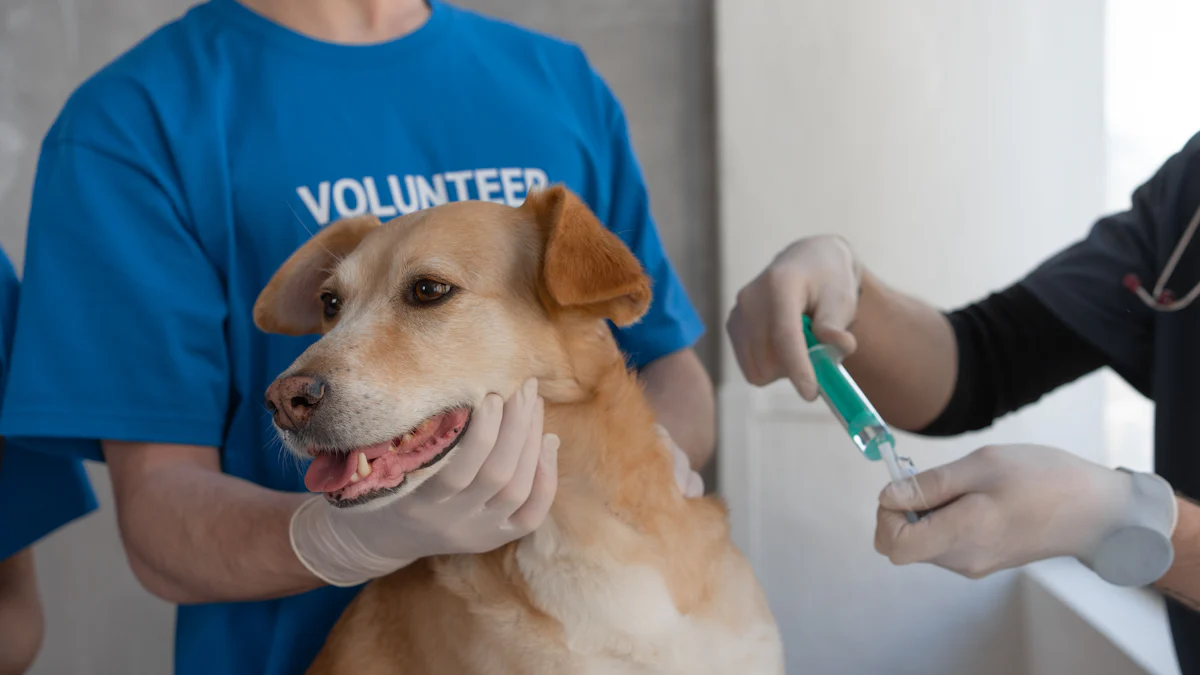Dog insurance in 2025 helps you manage unexpected vet bills and routine care costs. Policies often cover vet visits, surgeries, and prescriptions, but they exclude pre-existing conditions and grooming. For example:
| Coverage Type | What’s Included | What’s Not Included |
|---|---|---|
| Standard pet insurance | Vet visits, surgeries, hospitalizations, diagnostics, and prescriptions | Pre-existing conditions, routine care, vaccines, spaying and neutering, behavioral problems, grooming, and cosmetic procedures |
| Pet wellness plans | Vaccinations, spaying and neutering, dental cleanings | Vet visits, emergency care, surgeries, diagnostics, prescriptions/medications |
With the global pet insurance market expected to grow to $21.44 billion in 2025, now’s the time to explore insurance for dogs to protect your furry friend.
Key Takeaways
- Dog insurance helps pay for surprise vet bills and regular care. It gives pet owners peace of mind.
- Pick the right plan for your dog’s needs: accident-only for cheaper plans, or accident and illness for more coverage.
- Know what’s not covered, like old health problems or optional treatments, to avoid surprise costs.
Types of Insurance for Dogs
When it comes to protecting your furry friend, you’ve got several options for insurance for dogs. Each type of coverage is designed to meet different needs, so let’s break them down.
Accident-Only Coverage
Accident-only insurance is exactly what it sounds like—it covers injuries caused by accidents. If your dog breaks a leg, swallows something they shouldn’t, or gets hurt in a car accident, this type of plan has you covered. However, it doesn’t include illnesses, hereditary conditions, or preventive care.
Here’s why some pet owners choose accident-only coverage:
- It’s budget-friendly, with lower premiums compared to comprehensive plans.
- It’s ideal for active dogs prone to injuries, like those who love to run, jump, and explore.
- It focuses solely on emergency care, so you’re not paying for extras you might not need.
But keep in mind, this type of insurance won’t help with chronic conditions or diseases.
Accident and Illness Coverage
If you’re looking for broader protection, accident and illness coverage might be the way to go. This type of plan covers both unexpected injuries and illnesses, including hereditary conditions and chronic diseases. It’s a more comprehensive option, but it does come with a higher price tag.
On average, accident and illness coverage costs about $53.34 per month. For example, insuring a five-year-old medium mixed-breed dog in Florida could cost anywhere from $17 to $59 monthly, depending on factors like deductibles and reimbursement rates. You can also add options like exam fee reimbursement or prescription drug coverage for an extra $9 to $10 per month.
Wellness Plans and Preventive Care
Wellness plans focus on keeping your dog healthy through routine care. These plans cover services like vaccinations, dental cleanings, and annual exams. They’re designed to catch potential health issues early and promote overall well-being.
Here are some common services included in wellness plans:
- Bloodwork and internal organ screens
- Heartworm and Lyme disease testing
- Vaccinations (e.g., Rabies, Bordetella)
- Professional dental cleaning
- Fecal exams and deworming medications
Costs for wellness plans vary. For instance, companies like Lemonade offer plans starting at $15 per month, while others like Embrace charge around $35.42 for dogs.
Choosing the right type of insurance for dogs depends on your budget and your pet’s needs. Whether you want basic accident coverage or a plan that includes preventive care, there’s an option out there for you.
Exclusions in Insurance for Dogs
When choosing insurance for dogs, it’s important to know what’s not covered. Policies often have exclusions that could leave you paying out of pocket for certain expenses. Let’s take a closer look at some common exclusions.
Pre-Existing Conditions
Most insurance providers won’t cover pre-existing conditions. These are health issues your dog had before the policy started. For example, if your dog licked its paws excessively before getting insurance and was later diagnosed with allergies, that condition would be excluded. Chronic illnesses like arthritis or diabetes also fall under this category if diagnosed before coverage begins.
Some insurers make exceptions for curable conditions. If your dog is treated and symptom-free for a set period, usually 180 days to a year, they might cover it. However, incurable conditions like heart disease are almost always excluded.
Elective and Cosmetic Procedures
Insurance doesn’t cover procedures that aren’t medically necessary. These include cosmetic surgeries like ear cropping or tail docking. Other examples are dew claw removal, spaying, neutering, and oral surgeries unless they’re required for health reasons.
If you’re considering any of these procedures, you’ll need to budget for them separately. They’re not part of standard insurance plans, even if they seem routine.
Breeding-Related Costs
Breeding your dog comes with unique expenses, but most policies won’t help with them. Costs related to pregnancy, whelping, or complications during delivery are typically excluded. Even routine care for breeding dogs, like fertility treatments, isn’t covered.
If you plan to breed your dog, look for specialized coverage or set aside funds for these costs. Standard insurance for dogs won’t include them.
How Insurance for Dogs Works

Deductibles and Reimbursement Rates
Understanding deductibles and reimbursement rates is key to managing your dog’s insurance costs. A deductible is the amount you pay out of pocket before your insurance kicks in. Higher deductibles mean lower monthly premiums, but you’ll pay more when filing claims. For example, a $1,000 deductible can save you about $35 per month compared to a lower deductible. On the other hand, a $200 deductible might cost you $20 more each month.
Reimbursement rates determine how much of your vet bill gets covered after meeting the deductible. Most plans let you choose between 70%, 80%, 90%, or even 100% reimbursement. Lower reimbursement rates reduce your premiums but increase your share of the costs. If your dog needs frequent care, a higher reimbursement rate might save you money in the long run.
Waiting Periods and Policy Limits
Insurance for dogs doesn’t start immediately. Most policies have waiting periods before coverage begins. For accidents, the waiting period is usually 1 to 14 days. Illness coverage often takes longer, ranging from 14 to 30 days. Some insurers even offer zero-day waiting periods for accidents, but these are rare.
Policy limits also play a big role. These limits cap how much your insurer will pay annually or per incident. Higher limits provide more coverage but come with higher premiums. Be sure to check these details when comparing plans.
Factors That Impact Coverage (Breed, Age, and Health History)
Your dog’s breed, age, and health history significantly affect coverage and costs. Certain breeds are prone to specific health issues, which can lead to higher premiums or even coverage restrictions. For instance, insurers often categorize breeds based on risk, and some may deny coverage for breeds considered dangerous.
Age is another factor. Older dogs typically cost more to insure because they’re more likely to develop chronic conditions. Some insurers may even refuse new policies for senior dogs. Your dog’s health history also matters. Pre-existing conditions won’t be covered, so it’s best to get insurance early.
By understanding these factors, you can choose a plan that fits your dog’s needs and your budget.
Dog insurance in 2025 gives you peace of mind and protects your wallet from unexpected vet bills. It also ensures your dog gets the care they deserve. To choose the best plan:
- Determine Coverage Needs: Decide between accident-only, illness, or wellness plans.
- Compare Policies: Check limits, exclusions, and waiting periods.
- Act Early: Insure younger pets to avoid pre-existing condition exclusions.
Without insurance, unexpected vet costs can strain your finances. Proactive coverage helps you catch health issues early, saving money and heartache. Investing in the right plan keeps your furry friend healthy and happy for years to come. 🐾
FAQ
What’s the best age to get insurance for my dog?
The earlier, the better! Puppies have fewer pre-existing conditions, so you’ll get more comprehensive coverage and lower premiums. 🐶
Can I use any vet with pet insurance?
Yes, most insurance plans let you choose any licensed vet. You’re not limited to a specific network.
Does dog insurance cover dental care?
It depends on the plan. Wellness plans often include dental cleanings, but standard insurance usually covers dental issues only if caused by an accident or illness.
